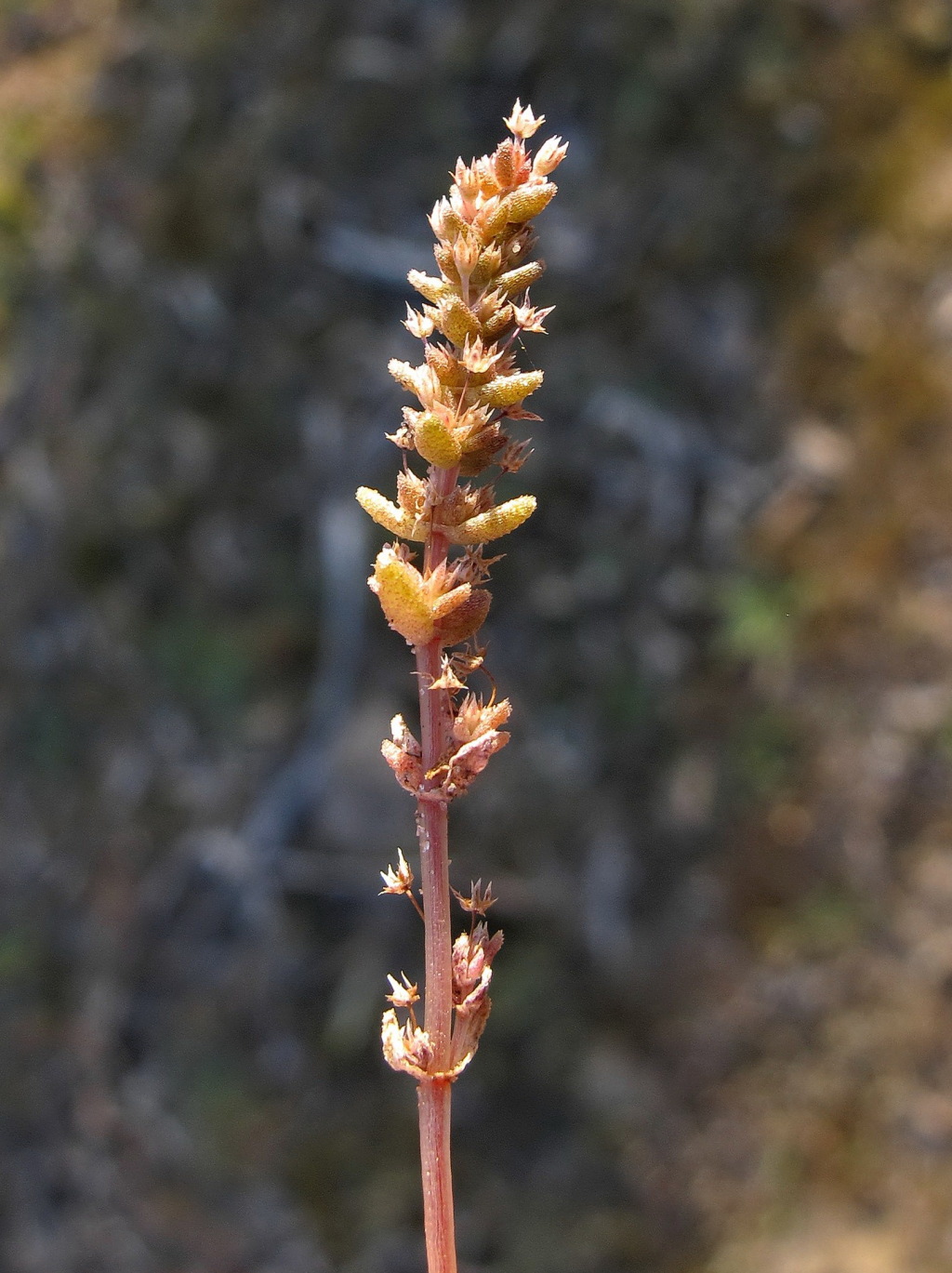Crassula colligata
ToelkenFew-branched, usually erect annuals, branches up to 16 cm long, often wiry-woody. Leaves linear-lanceolate, 2–3.5(–5.3) mm long, 0.4–0.9(–1.3) mm wide, acute with a deciduous hyaline point, obtuse with age, more or less flat above and convex below. Inflorescence 1-several spike-like thyrses with sessile cymules in axils of leaf-like bracts, often becoming pedicellate when fruiting. Flowers 4-merious; calyx lobes triangular or linear-lanceolate, 1.2–2.2 mm long, becoming longer in fruit, acute to pointed, erect to inclined, somewhat pyramidal, the tips often touching one another; corolla cream tinged red, lobes lanceolate, 0.6–0.8 mm long, acuminate and folded lengthwise; nectary scales linear-cuneate to almost T-shaped, 0.4–0.6 mm long, 0.1–0.3 mm wide, usually truncate; carpels conical, with 2 ovules. Follicles smooth to finely papillose, releasing seeds through apical pore or rarely detaching basally from receptacle; seeds 0.3–0.5 mm long, smooth or with tubercles along longitudinal ridges.
MuM, Wim, GleP, Brid, VVP, VRiv, MuF, GipP, OtP, Gold, CVU, GGr, NIS, EGU, WPro, HSF, HNF, MonT, VAlp.
2 subspecies.
The distinction of this species and Crassula sieberiana is unclear in Victoria. Crassula colligata is thought to occur in drier regions of Australia, and is more common in western Victoria. This species is principally distinguished by the presence of a colourless point on young leaves, a character soon lost, and almost impossible to observe on dried material. Other characters such as erect, few-branched habit, wiry branches with long basal interodes, and pyramid-shaped fruits with clasping calyx lobes may be used to distinguish it from Crassula sieberiana, which is generally a longer-lived, much branched, decumbent herb, with fleshy branches and short basal internodes, and typically cup-shaped fruits. However, none of these characters is consistent in either species, and a combination of these characters along with habitat may need to be considered to identify species in the absence of fresh young leaves.
 Spinning
Spinning



